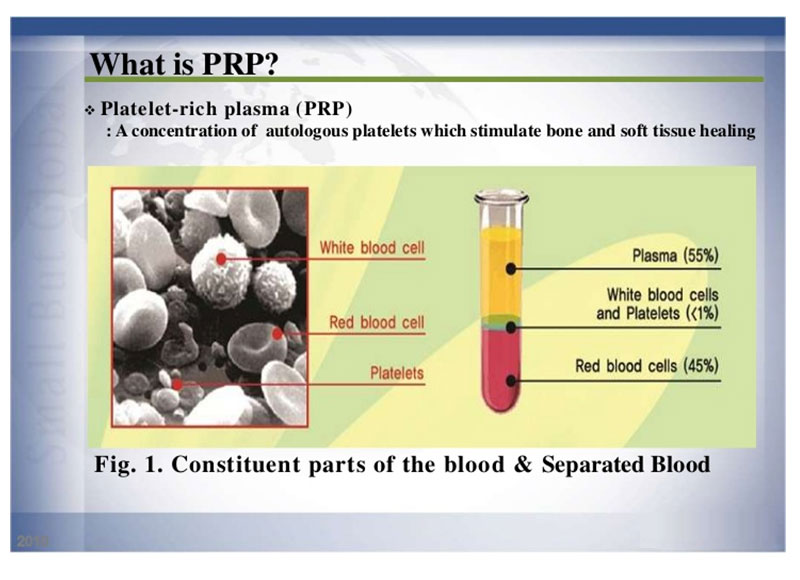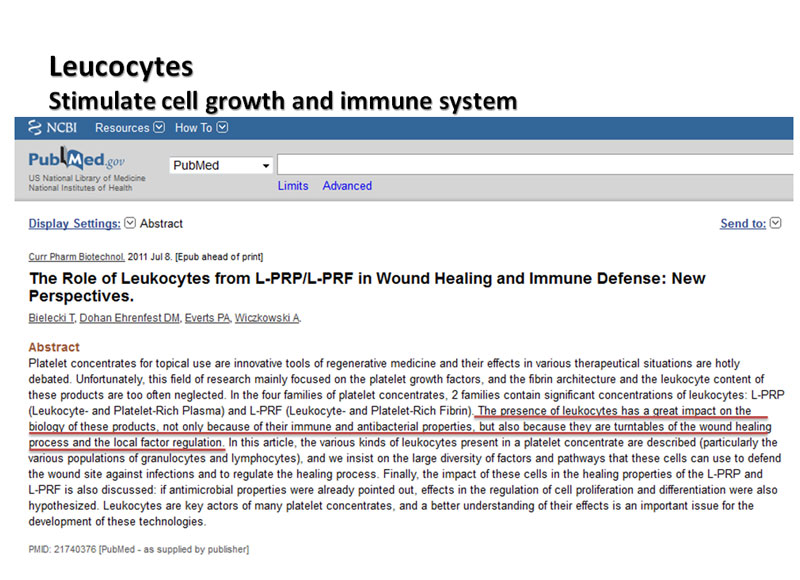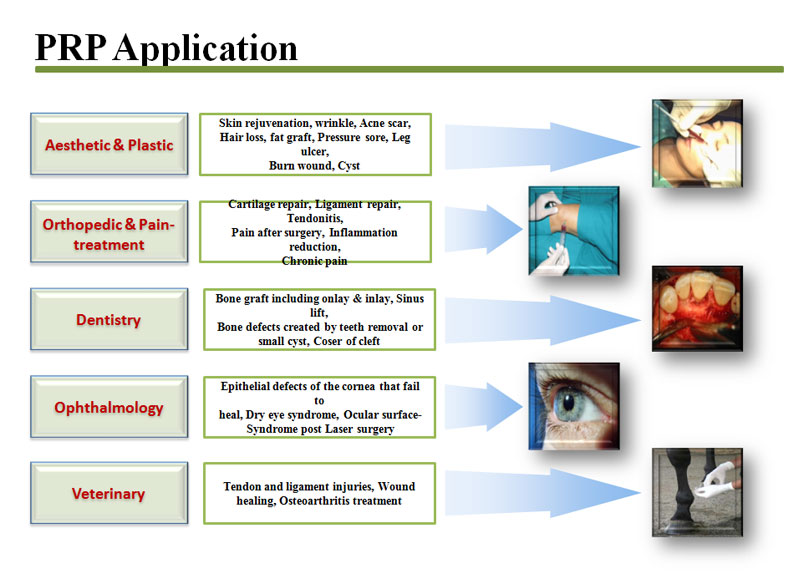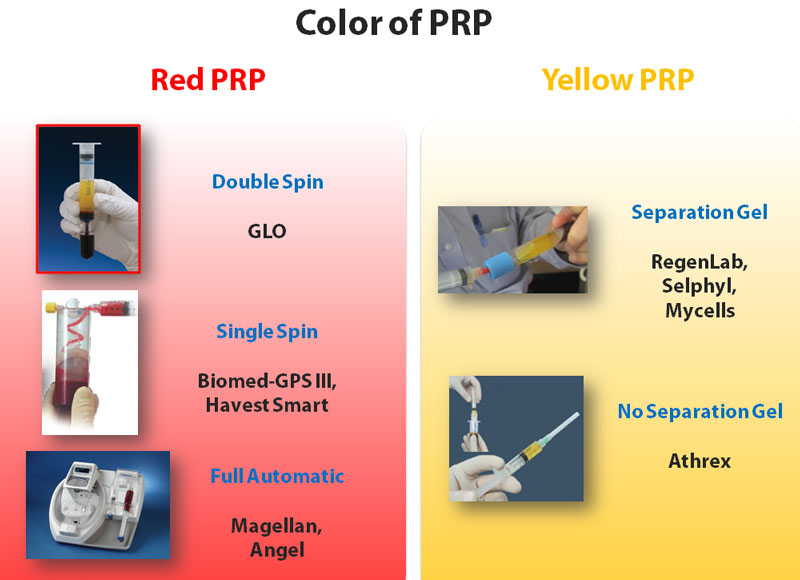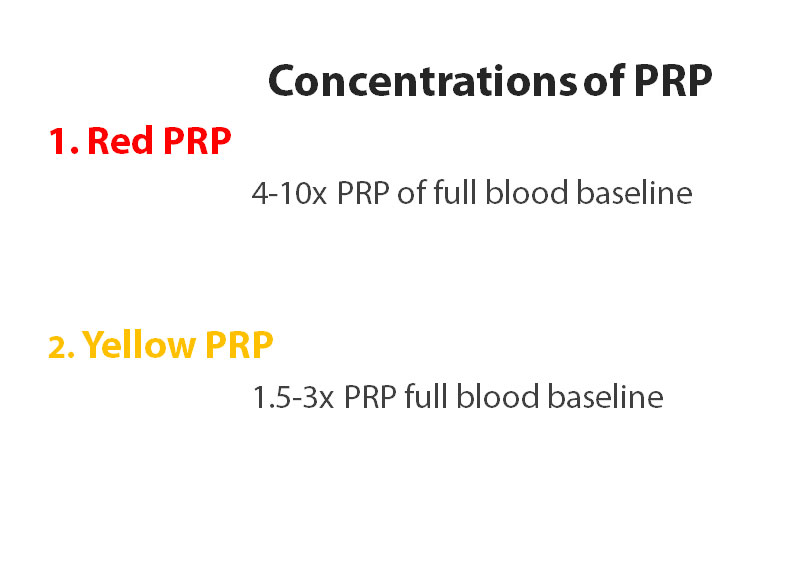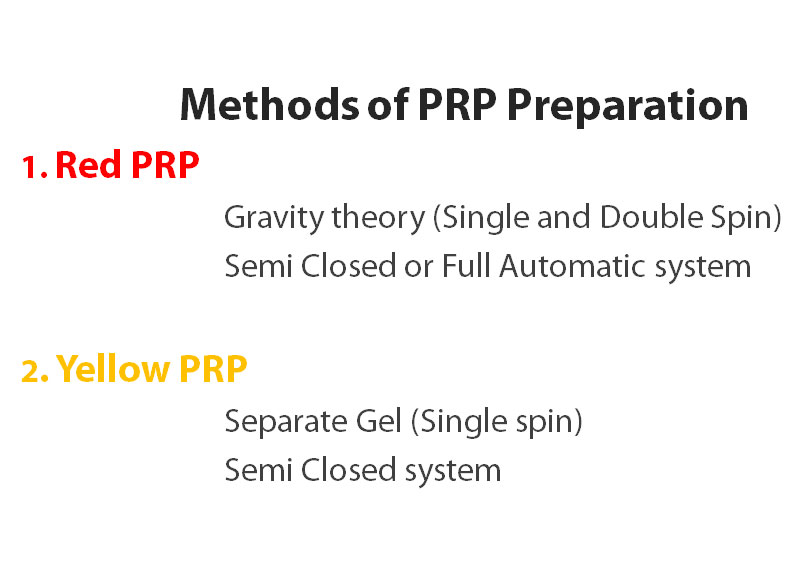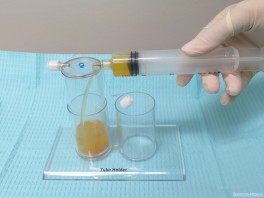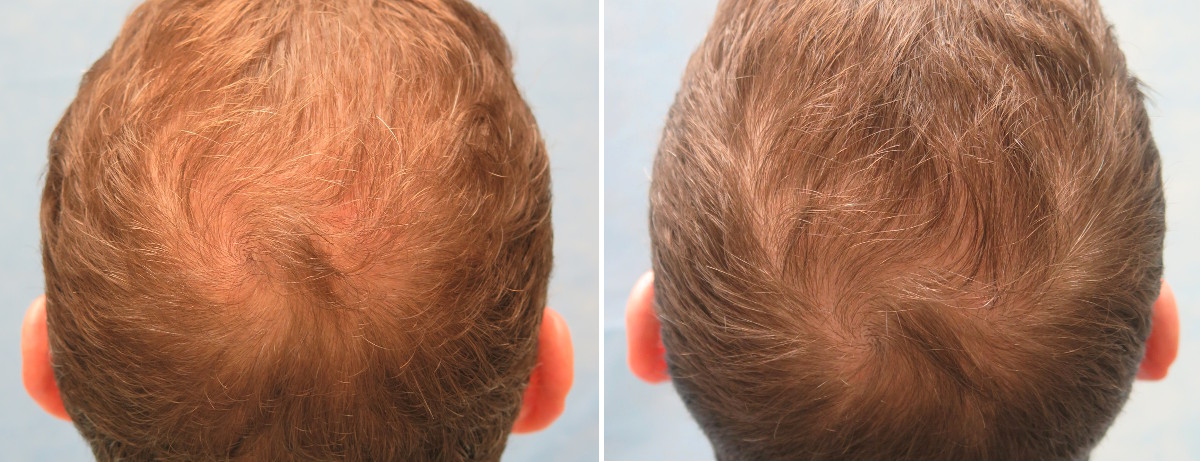PRP Treatment (Platelet Rich Plasma)
What is PRP?
Platelet rich plasma (PRP) is concentrated blood plasma which contains approximately three to five times the number of platelets found in normal circulating blood. In addition, it contains platelet derived growth factor (PDGF), vascular endothelial growth factor (VEGF), transforming growth factor (TGF) and other bioactive proteins that aid in wound healing and possibly hair growth.
Growth factors in platelet rich plasma (PRP) have been used to facilitate wound healing. Recently, studies have suggested that PRP may also serve as a safe and effective treatment option for male and female pattern hair loss.
Human blood is comprised primarily of red blood cells (RBC), as well as white blood cells (WBC), platelets, and plasma. By initiating the first step of coagulation, platelets are the key to the body’s ability to heal wounds. It is thought that by increasing the platelet count in a wounded area, the body’s healing to that area would be accelerated – explaining the use of PRP in wound healing. Its effects on promoting hair growth make it useful for the medical treatment of hair loss.
PRP Treatments at Dr.Arul's
The treatments are administered by a Dr.Arul's physician and take about a half hour to 45 minutes. For some patients, the injections may be uncomfortable. For those patients we offer local anesthesia prior to the injections which helps to reduce the discomfort. Patients are monitored photographically to assess the benefits of therapy. We will modify your treatment schedule based on your individual response to therapy. The physicians at Dr.Arul's have the knowledge to know when PRP for hair loss is appropriate and the skill to inject the proper quantity of PRP at just the right depth to achieve the desired result — a skill that cannot be overstated.
Before and After Photos of PRP Hair Loss Treatment
PRP for Hair Loss
The Platelet Rich Plasma (PRP) commonly used in hair restoration is “autologous,” meaning that it is derived from the patient’s own blood. To obtain PRP, a patient’s blood is spun in a centrifuge to separate the solid from liquid components and platelet activators, such as thrombin, calcium chloride and sometimes collagen, are added. The separated “solid” portion of the blood is PRP (platelet rich plasma).
There are commercially available systems for PRP hair loss treatment. These include: Cydomedix, Emcyte Pure PRP, Angel system, and Harvest system. PRP is sometimes combined with A-Cell, although the benefit of this combination is speculative.
PRP is then placed into a syringe and reintroduced into the treatment site i.e., either the surgical site or an area of hair loss. PRP be can sprayed onto a recipient area during and after a hair transplant, laid into the donor incision, or injected directly into a balding scalp. Prior to injecting PRP, doctors often create a ring-block of local anesthesia with 1% lidocaine.
When used to stimulate hair growth most doctors schedule injections at intervals of 1 to 9 months. Some improvement (in reversing miniaturization) can be expected in the first 2-6 months. The treatments must be continued periodically to maintain any improvement.
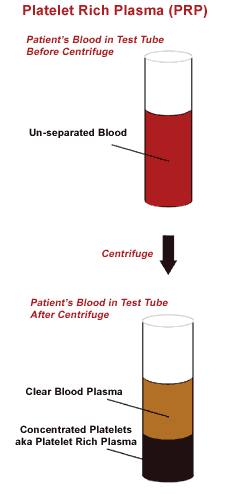
Mechanism of Action
For the medical treatment of hair loss, practitioners use PRP to stimulate the growth of follicles, thereby reversing the hair miniaturization seen in androgenetic alopecia (common baldness).
It is conjectured that the introduction of platelets and white blood cells through platelet rich plasma (PRP) can amplify the body’s naturally-occurring wound healing mechanism. It is also proposed that PRP can actually stimulate the stem cells (dermal papilla) of the newly transplanted hair follicles. Other doctors feel that during a hair transplant procedure, the body’s normal production of bioactive growth factors are optimal for healing and subsequent growth and that PRP for hair loss gives no additional benefit.
What are the Indications for PRP for Hair Loss?
PRP is used in many areas of medicine, including the acceleration of healing of tendon injuries, the treatment of osteoarthritis, in some aspects of dental work (i.e. jaw reconstruction), and in cardiovascular medicine. The concentrated form of plasma has been shown to accelerate wound healing and tissue repair and, thus, could potentially benefit hair restoration procedures.
In hair transplantation, PRP can be injected into or sprayed on the recipient site area to, theoretically, stimulate the healing of the transplanted grafts and into the donor area to facilitate healing of the donor incision and potentially minimize scar formation.
In the medical treatment of male and female pattern baldness (androgenetic alopecia), PRP can be injected into the balding scalp to potentially stimulate thin (miniaturized) hair to grow into thicker (terminal) hairs. Patients with thinning, but not totally bald, areas would be the best candidates.
Summary
PRP for hair loss is a relatively new treatment with a limited number of scientific studies to show its efficacy. The long-term benefits of PRP treatments for hair loss are not yet known. All patients receiving PRP treatments at Bernstein Medical are followed closely to determine effectiveness and if other therapeutic modalities may be needed.
HOW DOES PRP WORK?

Human blood contains mesenchymal stem cells, and autologous blood products that contain essential and specific growth factors that assist in tissue regeneration and healing. Published medical literature from Europe and the United States confirms the safety and use of PRP therapy. It has been used a medial adjunct therapy for over two decades for skin and wound healing. PRP therapy has established itself to be effective as a medical treatment modality in the specialty fields of oral surgery, neurosurgery, plastic and cosmetic surgery, sports medicine and orthopedics.
It has been used extensively in these specialties for the last twenty years with generally positive outcomes and success. In the field of hair restoration, evidence supports PRP therapy as a promising treatment option to promote hair growth. No claim can be made of its efficacy. While PRP is in the early stages of scientific research in hair restoration, PRP is not meant to replace current FDA approved therapies such as DHT blockers and Minoxidil. But it is a promising non-surgical therapeutic option for those patients with hair loss.
HOW DO YOU PERFORM THE PROCEDURE?
Blood is drawn in our office as though you are having routine blood testing at your primary care physician’s office. The blood is spun in a centrifuge and the PRP is separated and removed from the rest of the blood.
The PRP is taken from your body and is specially prepared by spinning down the blood cells to a high concentration. We use Healeon’s Medical PRP System. It is a closed sterile system and the platelets are concentrated to 3X the normal blood values. The system eliminates granulocytes which hurts tissue regeneration and wound healing. An anesthesia block is given to nerves of the scalp so the patient does not feel any pain. The highly concentrated platelet rich plasma (PRP) is then injected into the scalp. The patient’s hair is then washed and the patient may drive home without any assistance. No sedation or any medication is given during the procedure to inhibit the ability to drive or use machinery.
Benefits of the Healeon Medical System include:
A progressive non-surgical healing treatment in a variety of fields.
A fraction of autologous blood with supraphysiological concentration of platelets and their associated growth
factors.Upon activation, platelet-derived α granules release autologous growth factors involved in cell proliferation,
angiogenesis, collagenesis and matrix remodeling (PDGF/ TGF/ VEGF/ EGF/ FGF/ IGF etc).Autologous (from patient’s own blood).
Easy to use, rapid and effective system.
Requires small sample of blood (10ml).
Optimal Platelet Concentration for ALL specialties.
Biocompatible, and xeno-free, minimizing safety concerns and rejection.
Control of PRP volume by discarding PPP.
Increases platelet concentration.
Virtually eliminating granulocytes from the PRP, which are considered not beneficial in terms of regeneration
process and may contribute to a catabolic effect by secreting catabolic mediators, including metalloproteinases.Eliminating undesired erythrocytes, which have been shown to significantly decrease fibroblast proliferation
and augment apoptosis in vitro.Remnant of mononuclear cells present in the PRP assists in fighting infection and is thought to enhance the
anabolic effects of PRP.
PRP contains many growth factors that stimulate the hair follicle’s growth. PRP can be used preoperatively, intraoperatively, or post operatively. Some patient’s chose to have PRP performed every three (3) to four (4) months as early data suggests regular or semiannual PRP treatments that may stimulate hair growth.
THE SCIENCE OF PRP
PRP contains special cells called Platelets, that can theoretically cause growth of the hair follicles by stimulating the stem cells and other cells in the microenvironment of the hair follicle. These special Platelet cells promote healing, accelerates the rate and degree of tissue healing and regeneration, responds to injury, and formation of new cellular growth. The primary purpose of using PRP in hair restoration is to stimulate inactive or newly implanted hair follicles into an active growth phase.
Inside the Platelets are many intracellular structures such as glycogen, lysosomes and alpha granules. These granules within the PRP contain clotting and growth factors that are eventually released during the healing and repair process.
PRP specific cells that causes hair growth include:
Platelet-Derived Growth Factor (PDGF)—promotes blood vessel growth, cell replication, skin formation;
Transforming Growth-Factor-Beta (TGF-b)—promotes growth of matrix between cells, bone metabolism;
Vascular Endothelial Growth Factor (VEGF)—promotes blood vessel formation;
Epidermal Growth Factor (EGF)—promotes cell growth and differentiation, blood vessel formation,
collagen formation;Fibroblast Growth Factor-2 (FGF-2)—promotes growth of specialized cells and blood vessel formation; and,
Insulin Like Growth Factor - (IGF)—a regulator of normal physiology in nearly every type of cell in the body
DOES PRP WORK?
Individual results vary with each patient. No guarantees of success can be made but PRP preliminary studies indicate patients can respond to PRP therapy. Some hair restoration surgeons apply PRP to the scalp for those patients who are not surgical candidates every three (3) to four (4) months. Other protocols will use PRP before or during surgery to insure graft survivability.
PRP is a potential emerging non-surgical based therapy for natural hair follicle stimulation for thinning hair. Larger clinical studies are pending but the current medical literature contains numerous optimistic results. Although a few controlled studies exist, anecdotal and case reports are the primary sources reflecting success with PRP therapy.
WHO SHOULD NOT HAVE PRP TREATMENT?
Patients with history of heavy smoking, drug and alcohol use. Medical diagnosis such as platelet dysfunction syndromes, thrombocytopenias, hypofibrinogenaemia, hemodynamic instability, sepsis, acute and chronic Infections, chronic liver disease, anti-coagulation therapy, chronic skin diseases or cancer, metabolic and systemic disorders.
IS PRP FOR ME?
PRP has been used successfully in other medical and surgical disciplines for many years. The decision to use PRP is a personal decision and should be made after careful research, consideration and consultation with a physician. PRP is safe and natural because the procedure concentrates the good cells from your scalp and injects them directly back into the area where it is needed. There is absolutely no chance of getting a blood infection from another human being. PRP involves using your own cells that are not modified or changed, and it will not be rejected by your immune system.
Extensive clinical trials are not complete and medical data is not yet published to establish the absolute effectiveness of PRP therapy in hair restoration. PRP should not be considered a “cure” for hair loss and no guarantee can be made about its individual effectiveness. No claim of PRP efficacy in promoting hair growth can be made because there is no FDA approval that would allow such claims to be made.
CAN I USE OTHER MEDICAL THERAPIES CONCURRENTLY?
Absolutely. In fact, we encourage it and prescribe PRP therapy as a compliment to a nonsurgical approach for those patients who are not eligible for surgery or who want to delay hair restoration surgery. As a non-surgical treatment option, we recommend PRP therapy along with Minoxidil and DHT blockers or for those patients who can not tolerate or have side effects with these medications.
CONCLUSION
In summary, PRP therapy offers the opportunity for hair growth for those patients who are not candidates for surgery or those patients wanting a more aggressive nonsurgical approach to treatment. For our surgical patients PRP therapy is performed at the same day as the hair restoration surgery.
Whether you are looking for additional hair stimulation, or are looking to have hair surgery with the addition of PRP, OC Hair Restoration center is able to meet your needs. Results will vary from patient to patients, and PRP as a non-surgical option has not been offers patients with miniaturization and hair thinning improvement in hair caliber and thickness.
Benefits of PRP
Proven results in different scientific studies all over the world.
Since it is autologous( your own), this method eliminates the risk of transmissible infections.
It is free of any risks of allergic reactions, being autologous.
This is an office-based treatment.
The price of this treatment is quite affordable as compared to other treatment options.
Expected Result
PRP is recomended in cases of Hair Thinning, Hair Fall, to strengthen your existing hair and new growth of hair in cases of partial baldness.
Dr. Arul advices 3 sittings of PRP treatment at gap of 3-4 weeks between each sittings. Expected reults is as follows
It stops hair fall
Since it is autologous( your own), this method eliminates the risk of transmissible infections.
It increases the thickness of existing hair(Thin hair becomes Thick)
It also causes new growth of hair and increases the density
Benefits & Effectiveness of Biologically Enhanced Hair Transplant (FUE Hair Transplantation + PRP Injection at the same time)
Less bleeding
Less popping out of grafts out of the slits.
Immediate adhesion of grafts at recipient site
Less swelling and bruising at recipient site
Augmented graft stiffness, better handling
Better take and better growth of grafts.
Less trauma to grafts
